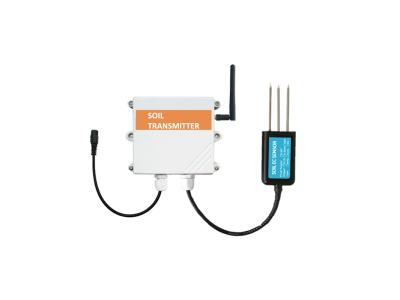Soil is the foundation of agriculture, providing vital nutrients and support to our crops. However, the soil is a complex and dynamic system that is difficult to understand and manage effectively. To optimize crop yields and minimize environmental impact, we need accurate information about soil properties such as moisture, temperature, pH, and nutrient content. Soil sensors have emerged as powerful tools in agriculture, enabling us to unlock the hidden secrets of soil and make informed decisions regarding crop management. This article explores the significance of soil sensors in agriculture and highlights the advancements that have made them essential components of modern farming.

Understanding Soil Sensors:
Soil sensors are devices designed to measure and monitor various soil parameters. They operate based on various principles, including electrical conductivity, capacitive sensing, and optical reflectance. The sensing element of a soil sensor interacts with the soil, causing a physical or chemical change that can be measured and quantified. This information provides valuable insights into soil characteristics and helps us identify and address issues related to crop growth and yield.
Advancements in Soil Sensor Technology:
Enhanced Accuracy and Precision:
Advances in soil sensor technology have significantly improved their accuracy and precision. Traditional soil analysis methods were time-consuming and often provided incomplete information. However, modern soil sensors utilize innovative materials and designs that enable highly accurate and precise measurement of soil properties. This enhanced accuracy allows for more effective crop management, resulting in higher yields and reduced environmental impact.
Wireless Connectivity and Data Management:
Soil sensors now offer the advantage of wireless connectivity and cloud-based data management. Traditional monitoring systems relied on manual data collection, limiting their deployment options and producing incomplete datasets. However, wireless soil sensors can transmit data to a central database in real-time, enabling farmers to make informed decisions regarding irrigation, fertilization, and other crop management strategies. Cloud-based data management also allows for easy access to historical data, facilitating long-term analysis and planning.
Multi-Parameter Sensing:
Soil sensors are increasingly being designed to measure multiple soil parameters simultaneously. Traditional sensors often focused on a single parameter, limiting their effectiveness in providing a comprehensive understanding of soil quality. Multi-parameter sensors enable farmers to obtain a holistic view of soil conditions, including moisture, temperature, pH, and nutrient content. By integrating multiple sensing elements, these sensors can provide valuable insights into the complex interactions between different soil properties and crop growth.
Low-Power Design:
Soil sensors are often deployed in remote locations where access to power sources is limited. Advances in low-power design have enabled sensors to operate for extended periods using minimal energy. This reduces the need for frequent battery replacement or recharging and ensures continuous monitoring of soil conditions.
Applications in Agriculture:
Irrigation Management:
Soil sensors play a crucial role in irrigation management, enabling farmers to optimize water use and minimize waste. By measuring soil moisture content, sensors can provide information on when and how much to irrigate. This ensures that crops receive the necessary amount of water without overwatering, reducing the risk of waterlogging and nutrient leaching.
Fertilization Management:
Soil sensors can also be used to monitor nutrient levels in the soil, enabling farmers to adjust fertilization strategies accordingly. By measuring soil conductivity or nutrient content, sensors can provide information on the availability of nutrients in the soil. This allows farmers to adjust fertilizer application rates and timing, reducing the risk of excess fertilization and minimizing environmental impact.
Crop Yield Optimization:
Soil sensors play a key role in optimizing crop yields by providing information related to soil quality and crop health. By monitoring soil moisture and nutrient content, sensors can provide insight into plant uptake and nutrient deficiencies. By detecting early signs of stress or disease, sensors can help farmers take timely action to prevent yield loss.
Environmental Monitoring:
Soil sensors can also be used for environmental monitoring, facilitating sustainable agriculture practices. By monitoring soil moisture and nutrient content, sensors can help farmers prevent overuse of water and fertilizers, reducing the risk of pollution and environmental damage.
Challenges and Future Directions:
While soil sensor technology has made remarkable strides, challenges remain that researchers are actively addressing. Sensor calibration, long-term stability, and reliability are areas requiring continued improvement. Additionally, expanding the range of detectable soil parameters and developing sensors that can withstand harsh outdoor environments are crucial for broader applications. Continued collaboration between academia, industry, and policymakers is essential in overcoming these challenges and maximizing the potential of soil sensor technology in agriculture.
In the future, advancements in machine learning and artificial intelligence will pave the way for even more sophisticated soil sensors. Increased integration with precision agriculture technologies and IoT platforms will enable the creation of intelligent, interconnected networks capable of optimizing crop yields and minimizing environmental impact. Moreover, public awareness and engagement will be vital in promoting the widespread adoption of soil sensor technology, fostering a collective effort to ensure sustainable agriculture for future generations.
Conclusion:
Soil sensors have become essential components of modern farming, enabling us to unlock the hidden secrets of soil and optimize crop yields while minimizing environmental impact. Their enhanced accuracy, wireless connectivity, and multi-parameter sensing capabilities have opened new avenues for understanding and managing soil conditions. By facilitating irrigation and fertilization management, crop yield optimization, and environmental monitoring, soil sensors play a vital role in sustainable agriculture. As technology continues to evolve, we must embrace the opportunities presented by soil sensor advancements and work together to promote sustainable agricultural practices.





